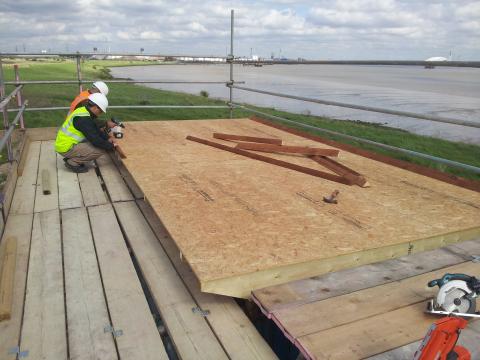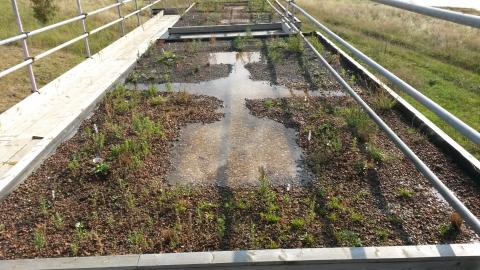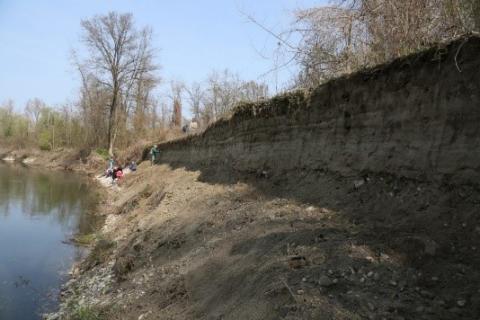Barking Riverside Green Roof Ecomimicry Experiment
Photo gallery


Summary
Conserving important brownfield invertebrate community of regional importance as part of strategic multifunctional green infrastructure. Target species included the brown-banded carder bee (Bombus humilis) (UK Biodiversity Action Plan Priority Species) and Gymnosoma nitens (RDB1) but also a wider set of species. This project used an innovative ecomimicry approach to designing urban green infrastructure for the new development. Ecomimicry involves mimicking the characteristics of local ecosystems, in this case regionally important open mosaic habitat which had formed on the post-industrial brownfield site.
Designing green roofs using ecomimicry of key brownfield habitat niches provided a mechanism for conserving the biodiversity, habitat connectivity and ecosystem service provision of the brownfield site post-development. This approach also offered opportunities for local communities to reconnect with nature, and the industrial heritage of the site, promoting engagement, ownership and enjoyment.
Novel green roof designs were developed and tested on site and were successful in supporting the regionally important biodiversity associated with the site prior to development. The results are being fed into innovative green infrastructure design that will be rolled out more broadly across the site as wider redevelopment continues. Embedding regional context into green roof design enabled alleviation of location-specific issues caused by urbanisation of the site and allowed restoration of regionally typical and important habitat and ecosystems. It is hoped that such design will enable Barking Riverside site to act as stepping stone habitat (Saura et al., 2014), providing connectivity between key sites that are being conserved and protected in the region
Designing green roofs using ecomimicry of key brownfield habitat niches provided a mechanism for conserving the biodiversity, habitat connectivity and ecosystem service provision of the brownfield site post-development. This approach also offered opportunities for local communities to reconnect with nature, and the industrial heritage of the site, promoting engagement, ownership and enjoyment.
Novel green roof designs were developed and tested on site and were successful in supporting the regionally important biodiversity associated with the site prior to development. The results are being fed into innovative green infrastructure design that will be rolled out more broadly across the site as wider redevelopment continues. Embedding regional context into green roof design enabled alleviation of location-specific issues caused by urbanisation of the site and allowed restoration of regionally typical and important habitat and ecosystems. It is hoped that such design will enable Barking Riverside site to act as stepping stone habitat (Saura et al., 2014), providing connectivity between key sites that are being conserved and protected in the region


